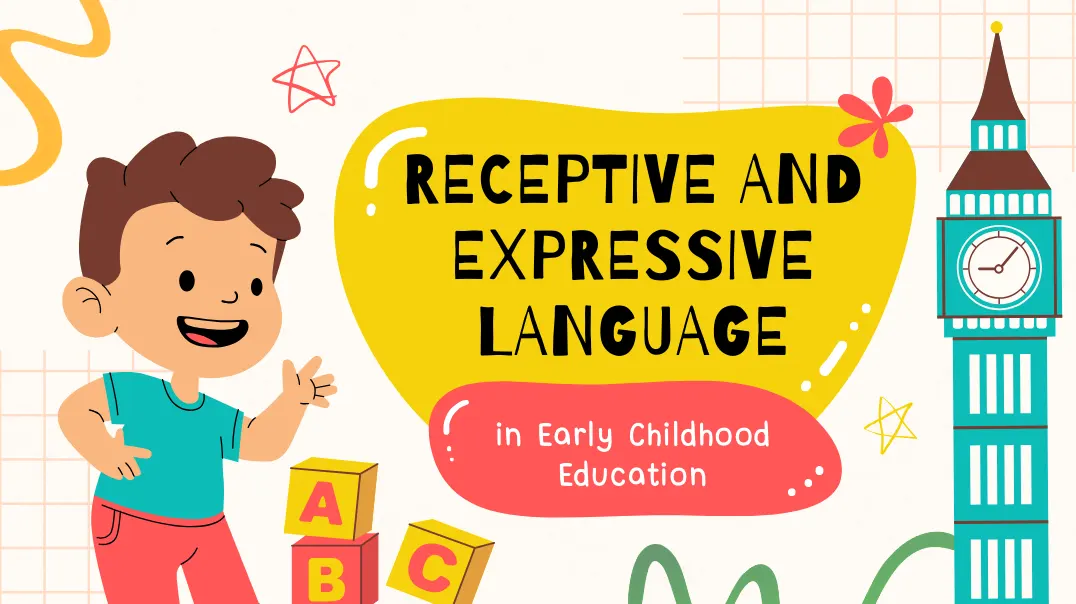Receptive and expressive language skills are important building blocks of early development. Receptive language helps children understand the world, while expressive language enables them to interact with it. If either one is delayed, a child’s communication, confidence, and academic success are likely to suffer.
The difference between receptive and expressive language lies in the direction of information processing. Receptive language refers to the ability to understand and interpret spoken or written language, while expressive language involves the ability to express thoughts, feelings, and ideas through speech, writing, or other symbolic systems. When either skill is underdeveloped or impaired, it can significantly hinder a person’s ability to learn, socialize, and interact meaningfully with the world around them.
A preschooler with strong receptive language might follow a teacher’s directions like “Put your book on the shelf and sit on the rug,” but if their expressive language is delayed, they may only respond with gestures or single words like “done” instead of full sentences. This can lead to misunderstandings and missed learning opportunities.
In short, receptive and expressive language skills are vital components of communication. Understanding their differences and how they work together empowers parents, educators, and therapists to support language development effectively.
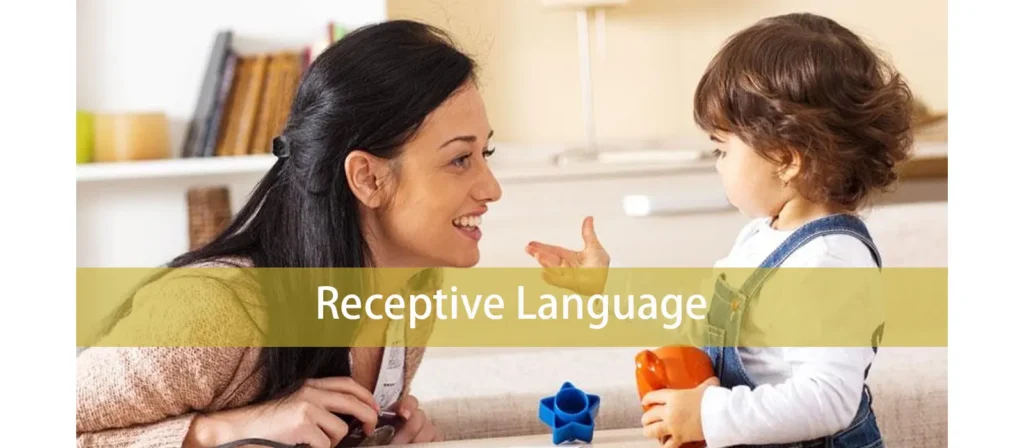
What is Receptive Language?
Receptive language refers to the ability to understand and process the language we hear or read. It involves skills such as listening, following directions, identifying vocabulary, interpreting questions, and comprehending verbal cues. It is typically the first language skill children begin to develop and plays a foundational role in overall communication.
Young children begin showing receptive language skills when they respond to their names, look toward a sound, or follow simple commands. As they grow, their ability to understand more complex instructions and abstract language develops.
Characteristics of Receptive Language Skills
Receptive language skills manifest in multiple daily interactions. Some core indicators of strong receptive abilities include:
- Following multi-step instructions
- Understanding a range of vocabulary
- Comprehending spoken narratives and stories
- Answering questions appropriately
- Recognizing humor, sarcasm, or figurative language
- Processing auditory information in real-time
- Identifying objects, people, and actions in response to verbal cues
Characteristics of Receptive Language Delays
Children with receptive language delays may demonstrate:
- Difficulty following directions, especially multi-step commands
- Trouble understanding stories or questions
- Limited response to spoken language
- Appearing as though they are not listening or paying attention
- Challenges in identifying common objects when named
- Difficulty learning new words or concepts
Developmental Milestones for Receptive Language
From infancy to childhood, receptive language progresses in stages:
- 0–6 months: Recognizes familiar voices, reacts to tone changes.
- 6–12 months: Understands simple words like “no” or “bye-bye”.
- 1–2 years: Follows one-step commands like “Give me the toy.”
- 2–3 years: Understands simple questions and phrases.
- 3–4 years: Follows multi-step directions and understands stories.
These milestones provide benchmarks, but individual variations are normal. Consistently missing milestones may suggest the need for evaluation.
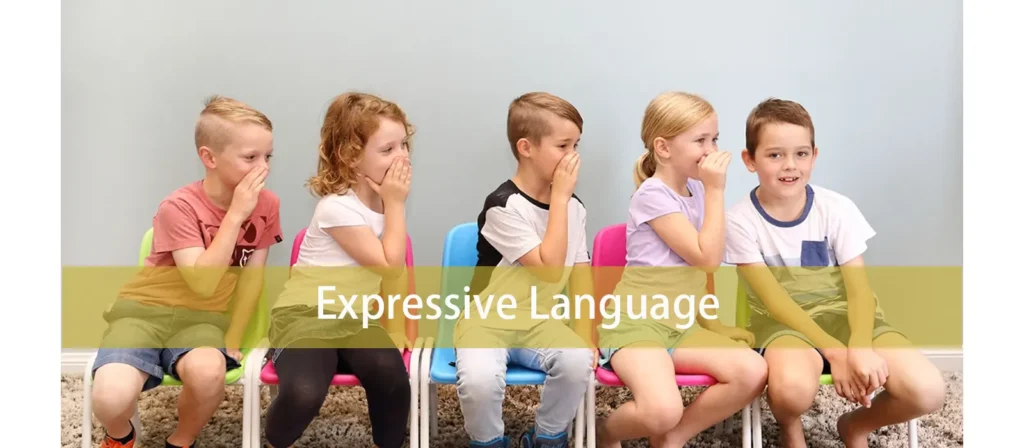
What is Expressive Language?
Expressive language is the ability to use words, gestures, symbols, or text to communicate thoughts, needs, or feelings. It’s more than just speech. It encompasses a variety of skills, including vocabulary choice, sentence structure, grammar, and the rules of social communication. It’s how a child responds to the world around them and reflects their ability to describe, explain, ask questions, and narrate.
Characteristics of Expressive Language Skills
Indicators of age-appropriate expressive language include:
- Using a variety of vocabulary
- Forming grammatically correct sentences
- Telling coherent stories
- Asking and answering questions
- Correctly using pronouns, verbs, and plurals
Children who are developing expressive language normally will steadily move from single words to phrases and then to complex sentences over time.
Characteristics of Expressive Language Delays
Children with expressive language difficulties may:
- Use limited vocabulary for their age
- Struggle with sentence formation or grammar
- Repeat phrases or rely on familiar words
- Have difficulty retelling events or stories
- Use gestures or sounds instead of words
- Become frustrated when trying to express themselves
Developmental Milestones for Expressive Language
Expressive language also follows a developmental timeline:
- 0–6 months: Cooing, babbling, expressing pleasure/discomfort.
- 6–12 months: Begins using gestures and says basic words like “mama”.
- 1–2 years: Combines two words (“more juice”), 50+ word vocabulary.
- 2–3 years: Forms simple sentences, starts asking “why”.
- 3–4 years: Tells simple stories, uses plurals and prepositions.
Key Differences Between Receptive vs Expressive Language
The core difference lies in direction:
| Dimension | Receptive Language | Expressive Language |
|---|---|---|
| Meaning | Understanding language | Producing language |
| Developmental Order | Usually develops first | Develops slightly later |
| Skills | Listening, comprehension, reading | Speaking, writing, gesturing |
| Challenges | May appear quiet but understand | May speak indistinctly or hesitantly |
How Do Receptive and Expressive Language Work Together?
Receptive and expressive language function in a reciprocal relationship. Strong receptive language skills provide the foundation for expressive abilities. When a child understands a concept, they are more likely to express it correctly. Conversely, developing expressive skills also reinforces receptive learning by giving the child practice using new vocabulary and grammatical structures.
Effective language intervention targets both skills simultaneously, often using interactive activities, play-based therapy, and structured learning environments that reinforce listening, comprehension, and expressive output in meaningful ways.
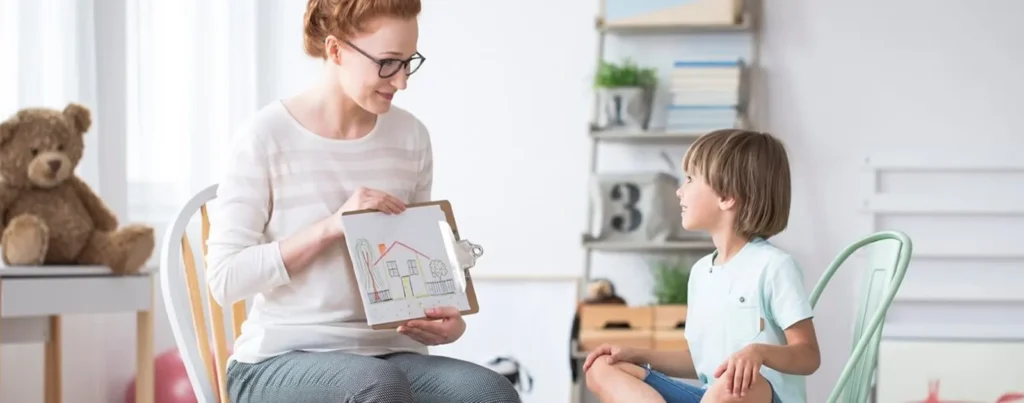
The most efficient Early Childhood Education practices braid the two domains intentionally:
- Input with purpose: Teachers front‑load key vocabulary and structures before an activity. For a sink‑float exploration, they introduce heavy, light, sink, float, predict, and test using real objects and gestures. Receptive exposure is broad and vivid.
- Guided processing: During the activity, teachers slow down, point, pause, and check comprehension. They ask varied wh‑questions, model thinking aloud, and use visual organizers. Children show understanding by sorting, pointing, and acting out processes—low‑pressure expressive responses that confirm comprehension.
- Output that consolidates: As the activity unfolds, teachers invite expressive language: “Tell me your prediction,” “Explain what happened,” “How could we make it float?” Sentence starters and word banks on clipboards or tabletop cards support expressive attempts. Children speak, draw, dictate, or use AAC to share ideas, which in turn prompts educators to model new input.
- Feedback that refines: Peers and adults respond to the child’s message by expanding vocabulary and grammar, prompting re‑explanations, or connecting ideas across contexts. The child receives this feedback receptively and adjusts expressively.
This cycle surfaces across the day:
- Arrival: Receptive language is supported with picture cues for routines; expressive language is invited through greeting scripts and choice‑making.
- Circle time: Receptive language is anchored by story props and big‑book pictures; expressive language emerges in predictions, repeated refrains, and acting out.
- Centers: Receptive language grows through peer talk and adult narration during block building and dramatic play; expressive language is used to negotiate roles, plan, and solve problems.
- Outdoor play: Receptive language is engaged through safety rules and game directions; expressive language thrives in storytelling about pretend adventures and in describing physical actions.
- Mealtimes: Receptive language is scaffolded with visual menus and routines; expressive language appears in requesting, commenting, and conversational storytelling.
- Transitions: Receptive language is aided by first‑then boards and timers; expressive language is practiced with songs, rhymes, and call‑and‑response routines.
- Rest time and closing: Receptive language is nurtured through calming read‑alouds; expressive language is consolidated as children reflect on the day.

Examples of Receptive and Expressive Language
Below are concrete, classroom‑ready examples aligned to Early Childhood Education routines. Use them as observation anchors, teaching targets, or documentation samples for portfolios and family conferences.
Examples of Receptive Language
- During arrival, a child hangs a backpack, places a lunchbox in a bin, and moves a name card to “Here” after hearing, “First backpack, then lunchbox, then name card.”
- In dramatic play, when a peer says, “You be the shopkeeper and I’ll be the customer,” the child walks behind the counter and starts arranging pretend food, demonstrating understanding of role language.
- At circle time, the teacher says, “If the animal I name lives in the ocean, touch your head; if it lives on land, touch your knees.” The child follows the conditional direction accurately and laughs when the teacher tries to trick the group with “dolphin.”
- During a read‑aloud, the child answers who and where questions, then uses pictures to infer why the main character felt disappointed, demonstrating literal and inferential comprehension.
- In a small‑group math activity, the child follows a three‑step direction: “Count five bears, put them in the cup, and show me the number card.”
- On the playground, the child stops at the edge when the teacher calls, “Freeze,” and then continues when told, “Walk to the gate and line up behind the blue cone,” applying rules to movement.
- In a music session, the child responds appropriately to tempo and action cues in a song: “Clap slowly… clap fast… stop,” integrating auditory cues with motor actions.
- During snack, the child identifies allergens by responding to, “Who has the milk card today?” and hands the card to the teacher, showing comprehension of a health routine.
- When the teacher says, “Put the big block under the bridge and the small block on top,” the child completes the spatial relation task, demonstrating receptive understanding of size and prepositions.
- In a bilingual classroom, the child shows comprehension of familiar instructions in both languages, even if expressive output is stronger in one language.
Examples of Expressive Language
- A toddler points to bubbles and signs “more,” then says “more bubbles,” combining gesture and speech to make a request.
- During block play, a child says, “Let’s make a garage. First we need walls, then we put a roof,” using temporal words and planning language.
- In art, a child describes a drawing: “This is my family at the beach. That is the lifeguard. The waves were huge,” adding details when prompted with open‑ended questions.
- At circle time, the teacher pauses during a repetitive line in a big book and the child fills in the missing phrase, demonstrating expressive recall and participation.
- During science exploration, a child explains, “It sank because it is heavy. The foil boat floated when I made the sides higher,” using cause‑and‑effect language introduced earlier.
- In social problem‑solving, a child says to a peer, “I am using the red truck now. You can have it when I’m done,” practicing assertive communication taught through scripts.
- A multilingual child tells a short story in the heritage language to a family volunteer and then labels key parts in the community language with picture supports, showing cross‑linguistic expressive flexibility.
- A child using a speech‑generating device selects icons to say, “Want swing. My turn,” and looks toward the swing, demonstrating purposeful expression with AAC.
- During closing circle, children co‑construct a class retell of the day’s events, with one child adding, “We built a tunnel. The marble went fast because the ramp was steep,” blending narrative and explanatory language.
- At mealtime, a child comments, “This apple is crunchy and juicy,” using descriptive vocabulary encouraged by a sensory word bank at the table.

What Are Receptive and Expressive Language Disorders?
Language disorders affect a person’s ability to understand, express, or both comprehend and produce language. Receptive and expressive language disorders can occur separately or together, often influencing how an individual communicates, learns, and interacts with others.
Receptive Language Disorder
A receptive language disorder occurs when a child has difficulty understanding spoken, written, or gestured language. These children may hear the words clearly but struggle to process their meaning. They may not follow instructions, misunderstand questions, or appear not to listen—although their hearing is normal.
Common areas of breakdown include:
- Vocabulary comprehension: Narrow understanding of common nouns, verbs, and descriptors used in the classroom’s themes; difficulty mapping new words during read‑alouds without substantial support.
- Grammar comprehension: Trouble interpreting pronouns, plural and verb tense markers, negative statements, or temporal words such as before and after; confusion when word order changes meaning.
- Following directions: Reduced accuracy on one‑ and two‑step directions; reliance on peers to cue actions; difficulty sequencing steps.
- Inferencing and figurative language: Limited ability to infer motives or feelings from pictures and stories; overly literal interpretations of playful language or jokes.
- Discourse comprehension: Difficulty tracking main ideas and details; missing connections across events in a story or activity.
Receptive language disorders can be mistaken for inattention or behavior problems. In truth, many “noncompliant” moments are comprehension breakdowns. Once input is simplified, paired with visuals and gestures, or delivered in a small group, the child often participates readily.
Expressive Language Disorder
In contrast, an expressive language disorder affects a child’s ability to speak, write, or otherwise communicate their thoughts. A child or adult with this condition may understand language well but struggle to put thoughts into words, form correct sentences, or use appropriate vocabulary.
Typical characteristics include:
- Vocabulary limitations: Over‑reliance on general words (thing, that, go) and fewer specific labels; slower uptake of new words without repeated modeling.
- Morphosyntax challenges: Omission of small but meaningful words or endings (articles, pronouns, plural ‑s, past tense ‑ed) relative to what is expected for the child’s language(s); reduced sentence variety.
- Narrative and explanatory difficulties: Harder time retelling a familiar story with a clear beginning, middle, and end; difficulty explaining procedures or cause‑and‑effect in science play.
- Pragmatics: Challenges initiating and maintaining topics, repairing breakdowns, and adjusting language for peers versus adults.
- Fluency of formulation: Word‑finding pauses, circumlocutions, or repeated starters that signal planning load rather than a speech sound disorder.
A multilingual child may speak less in the school language but tell rich stories at home in the heritage language. That is not a disorder; it is a distribution of skills across languages. Assessment and instruction should honor and build both.
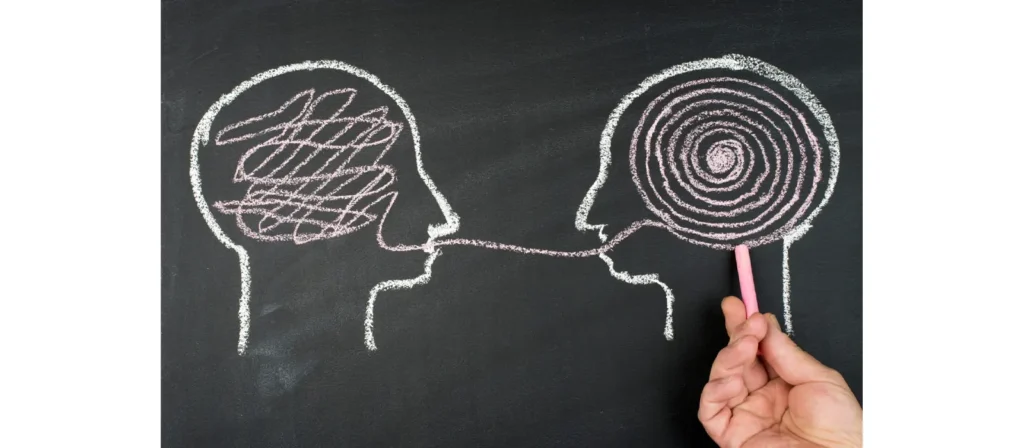
Signs of Receptive and Expressive Language Disorders
ECE teachers are often the first to notice when a child’s language profile looks different from peers. Observation across routines, coupled with brief, play‑based probes and conversations with families, provides powerful early evidence. The lists below are intentionally grounded in classroom routines to support practical noticing.
Signs of receptive language disorder
- Response to name and routine cues is inconsistent, especially in noisy or fast‑paced moments; the child looks to peers before acting.
- Following directions is fragile beyond a single step; the child completes the first action but misses the second or reverses order when temporal terms (first, then, last) are used.
- Question answering is limited, particularly for where, why, and how; the child defaults to yes/no or repeats part of the question.
- Story comprehension is surface‑level; the child recalls a picture detail but misses the main idea or the problem‑solution frame.
- Literal interpretations are common; the child does not catch pretend frames or humor in stories and songs without explicit cues.
- Vocabulary growth from read‑alouds is slow unless words are taught with concrete objects, gestures, visuals, and multiple repetitions.
- Behavior fluctuates with clarity; when expectations are presented with visuals and modeling, the child settles; when input is verbal‑only, frustration and avoidance emerge.
- Difficulty interpreting nonverbal cues such as changes in prosody or facial expression; misses the social meaning of a peer’s sigh or raised eyebrow.
Signs of expressive language disorder
- Limited vocabulary for classroom topics; the child relies on generic labels, points, or gestures even with familiar materials.
- Short, telegraphic utterances that omit grammatical markers relative to developmental expectations for the child’s language(s).
- Difficulty combining ideas into sentences during play explanations or picture description; frequent restarts or abandoned attempts.
- Narratives are sparse or disorganized; the child lists events without a clear sequence or causal link; temporal words are rare.
- Word‑finding problems; the child circles around a word (“the thing you eat with”) instead of naming it (“spoon”).
- Reduced pragmatic flexibility; the child does not repair when misunderstood or does not adjust language for different partners.
- Avoidance of speaking in groups; the child participates more in one‑on‑one settings with patient partners and visual supports.
- Limited use of alternative modes; without explicit modeling, the child does not yet use signs, pictures, or AAC to supplement speech.
A single sign does not constitute a disorder. Persistent patterns across weeks and settings, despite strong classroom supports, warrant a collaborative problem‑solving meeting with families and, when appropriate, referral for a speech‑language evaluation.
What is the Difference Between a Language Delay and a Language Disorder?
Below is a concise, educator‑friendly comparison to guide decision‑making. Use it with families to clarify next steps and set shared expectations.
| Aspect | Language Delay | Language Disorder |
|---|---|---|
| Definition | Slower than typical language development, but follows normal patterns | Atypical language development that doesn’t follow expected milestones |
| Cause | Often due to environment, hearing issues, or late blooming | May stem from neurological, developmental, or unknown causes |
| Progression | Usually catches up with peers over time | May require long-term intervention |
| Examples | Child starts talking later but uses correct grammar eventually | Child consistently struggles with sentence structure and vocabulary |
| Response to Therapy | Rapid improvement with minimal intervention | Progress may be slow or require ongoing therapy |
While both may appear similar early on, disorders typically show persistent and more complex language challenges.
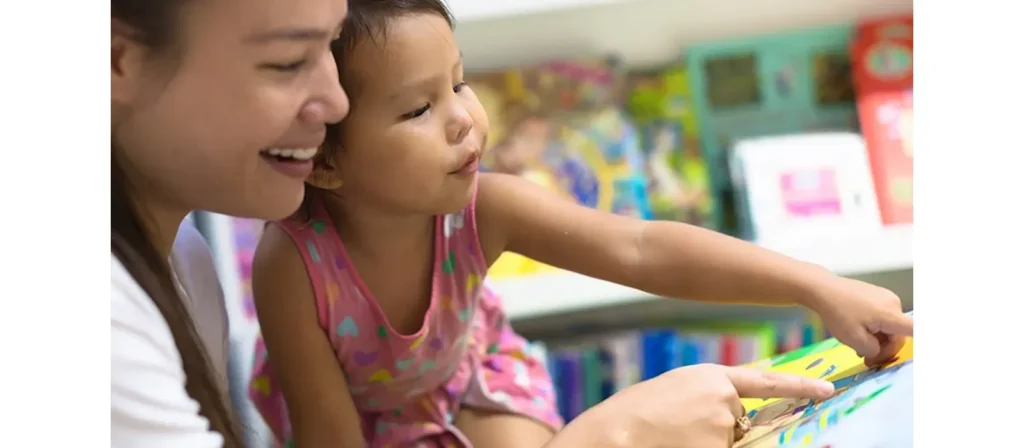
How Do Receptive and Expressive Language Develop?
Language development is a dynamic, ongoing process that begins from birth. Supporting both receptive and expressive language requires intentional interaction and targeted activities. Below are key ways to promote healthy development:
Make Eye Contact
Eye contact is foundational to communication. When teachers and parents maintain eye contact while speaking, it reinforces attention and engagement. In children, this encourages turn-taking and recognition of social cues. This simple habit also supports both understanding (receptive) and interaction (expressive).
Play
Interactive play stimulates language use and comprehension. Role-playing, pretend scenarios, and games like “Simon Says” support both receptive and expressive development by encouraging children to follow rules and create dialogue.
Expand vocabulary
Vocabulary breadth and depth drive both comprehension and expression. In the early years, word learning accelerates when adults connect new words to concrete experiences, visuals, and gesture, then prompt children to use the words in meaningful contexts.
Encourage Conversation
Children benefit from interactive dialogue. Asking open-ended questions and waiting for responses helps them process language and find the words they need to respond. These exchanges build confidence and competence in verbal expression.
Break Things Down
Complex instructions or abstract concepts should be simplified. Breaking language into manageable parts supports comprehension. For instance, instead of saying, “Go brush your teeth, put on your pajamas, and get in bed,” break it down into one step at a time.
Encourage Reading
Reading aloud builds vocabulary, comprehension, and narrative structure. Books expose children to more sophisticated language than everyday conversation and help them recognize story patterns, cause-effect relationships, and descriptive language.
Practice Listening Skills
Listening is central to receptive language. Activities like listening games, audio stories, or musical instructions train children to focus, decode language, and follow directions.
Use Visual Aids
Children with language challenges benefit greatly from visual reinforcement. Labels, images, and charts can clarify meaning and provide cues for communication. In our production line, we often incorporate color-coded trays, picture labels, and symbol charts into classroom materials for this very reason.
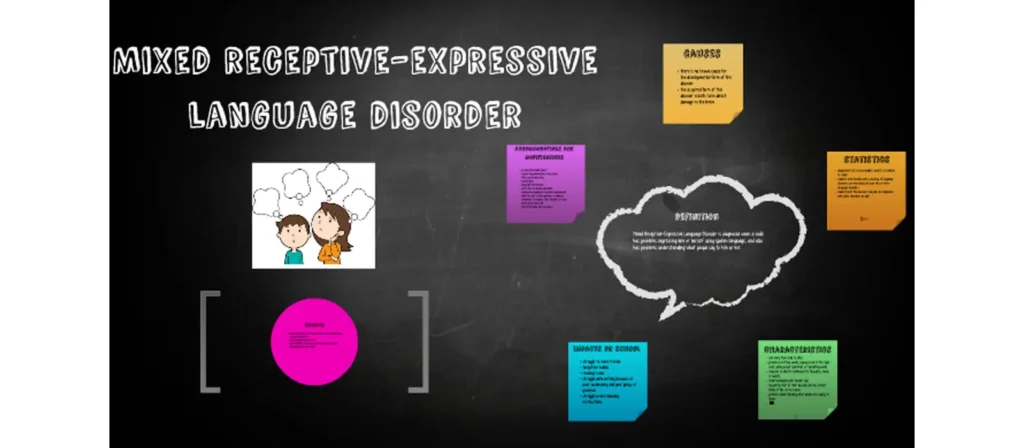
Mixed Receptive and Expressive Language Disorder
Some children experience significant difficulties in both understanding and expressing language. This condition is known as mixed receptive and expressive language disorder, and it poses greater challenges than when one area is affected in isolation. Children with this disorder may seem to live in their own world, struggling to process language inputs and produce coherent outputs.
Symptoms may include:
- Severe delays in speaking and understanding
- Poor vocabulary development
- Inability to follow even simple instructions
- Short or incomplete sentences
- Difficulty making or maintaining social connections
Mixed disorders are often associated with developmental conditions such as autism, intellectual disability, or global developmental delay. However, they can also occur without a broader diagnosis. These children benefit from intensive language therapy, educational accommodations, and coordinated support across home and school environments.
FAQs
- Are language disorders the same as speech disorders?
No. Language disorders involve problems understanding or using words. Speech disorders involve difficulties with sounds, voice, or fluency. - Can bilingual children be misdiagnosed with language disorders?
Yes. Language acquisition in bilingual children can mimic delays. It’s important to assess in both languages and involve culturally competent professionals. - How early can language disorders be diagnosed?
Concerns may be observed as early as 18 months. Formal diagnosis is typically made between ages 2–4, depending on the child’s symptoms and developmental level. - How can I help my child with receptive language at home?
Use simple instructions, read aloud daily, and incorporate visual supports like pictures or gestures to help them understand better. - Are language delays permanent?
Not necessarily. With early intervention and consistent support, many children and adults make significant progress. - Can a child have strong receptive but weak expressive skills?
Yes, it’s common for children to understand more than they can say, especially in early development.
Conclusion
Receptive and expressive language are essential tools for exploring the world. Language disorders can be both severe and profound, but they are not insurmountable. Through early identification, targeted support, and dedicated guidance from parents, teachers, and therapists, people with language disorders can thrive.
Sustained, high-quality learning in a joyful, culturally interactive classroom significantly improves students’ receptive and expressive language skills. When educators center daily learning around language, including setting up the environment, selecting books and songs, planning play scenarios, and building relationships, they better support children’s development.
In early childhood education, every daily activity is an opportunity to learn language. Call children by name and wait for their response. Provide meaningful choices and encourage all forms of expression. Talk about the world and then share the story with children. When receptive and expressive language are interwoven into play, exploration, and community activities, children develop the communication skills they will need for kindergarten and beyond.

